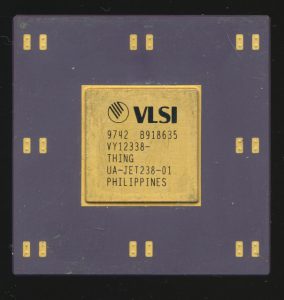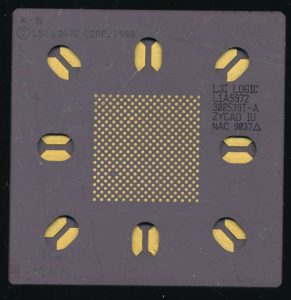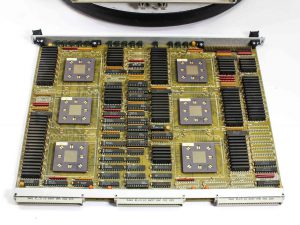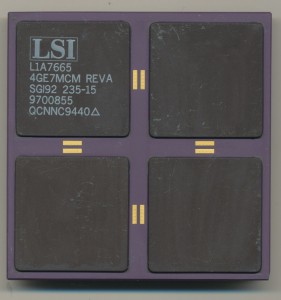VLSI: What is this THING?
VLSI was started back in 1979 by several former Fairchild employees, 2 of which had previously founded Synertek, a connection that becomes important later on. VLSI is best known for being a contract deign/fab services company. They excelled at custom, and semi-custom designs for a wide range of customers, as well as acting as a foundry for customers own designs. They became best known for their part in the development and success of the ARM processor back in the late 1980’s with ACORN. They manufactured, as well as marketed and sold, several versions of the ARM processor, one of the few processors they actually sold themselves. They also made a 6502 used by Apple and 65C816 (CMOS 16-bit 6502). The 6502 was also a processor that Synertek had made back before Dan Floyd, and Gunnar Wetlesen left Synertek to start VLSI.
VLSI went on to fab processors for some of the biggest companies of the 1980’s. The made the processor for several Honeywell BULL mainframes, built the processor for the HP A990 computer, and made dozens of chips for SGI and WANG. VLSI also enjoyed wide success in the early 1990’s making chipsets for 486 processors, before Intel began to offer chipsets on their own in the Pentium era.
Unfortunately like LSI, most of VLSI’s designs are relatively unknown to all but them and their customer. Marking on the chips rarely provide information on who it was made for, and even less on what exactly it does. The above chip, marked “VY12338 THING UA-JET238-01” seems to be names as an answer to the question “What do we call this thing?” Certainly seems to be a bit of humor on the part of some engineer.
VLSI was bought by Philips (now NXP) in 1999 so the THING may forever remain an unknown thing.
Posted in:
Just For Fun






